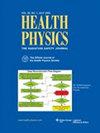以科学为依据制定保护人类和环境免受辐射影响的政策。
IF 1
4区 医学
Q4 ENVIRONMENTAL SCIENCES
引用次数: 0
摘要
为了保护工人、病人和公众(包括敏感人群),今天的辐射防护实践是一个漫长而慎重的过程。本文概述了美国环境保护局(US EPA)在保护人类健康和环境免受不必要的辐射照射方面的责任。这一责任的起源可以追溯到一个世纪前保护工人免受 X 射线和镭辐射的早期努力。今天,我们所采用的辐射防护系统是健全的,并以最新的科学共识为依据。它有助于减少或消除对工人、病人和公众的不必要照射,同时使辐射和放射性物质在能源、医学、研究和太空探索等不同领域得到安全有益的利用。美国国家科学院、国家辐射防护和测量委员会、联合国原子辐射影响问题科学委员会和国际辐射防护委员会等科学机构对辐射对健康影响的研究进行定期审查和分析,在收集新的科学信息的同时,继续为辐射防护实践提供信息。作为一个公共卫生机构,美国环保局对能够更好地阐明低剂量和低剂量率辐射照射的影响的研究成果非常感兴趣,这些研究成果适用于保护不同人群免受各种辐射源的照射。健康物理学会等专业组织可以为辐射防护从业人员提供有关科学现状的继续教育课程,并介绍辐射防护系统的关键基础。这些努力将帮助辐射防护专业人员做好准备,更有效地与利益相关者交流辐射健康信息。本文章由计算机程序翻译,如有差异,请以英文原文为准。
Science-informed Policy Making for Protecting People and the Environment from Radiation.
The process to arrive at the radiation protection practices of today to protect workers, patients, and the public, including sensitive populations, has been a long and deliberative one. This paper presents an overview of the US Environmental Protection Agency's (US EPA) responsibility in protecting human health and the environment from unnecessary exposure to radiation. The origins of this responsibility can be traced back to early efforts, a century ago, to protect workers from x rays and radium. The system of radiation protection we employ today is robust and informed by the latest scientific consensus. It has helped reduce or eliminate unnecessary exposures to workers, patients, and the public while enabling the safe and beneficial uses of radiation and radioactive material in diverse areas such as energy, medicine, research, and space exploration. Periodic reviews and analyses of research on health effects of radiation by scientific bodies such as the National Academy of Sciences, National Council on Radiation Protection and Measurements, United Nations Scientific Committee on the Effects of Atomic Radiation, and the International Commission on Radiological Protection continue to inform radiation protection practices while new scientific information is gathered. As a public health agency, US EPA is keenly interested in research findings that can better elucidate the effects of exposure to low doses and low dose rates of radiation as applicable to protection of diverse populations from various sources of exposure. Professional organizations such as the Health Physics Society can provide radiation protection practitioners with continuing education programs on the state of the science and describe the key underpinnings of the system of radiological protection. Such efforts will help equip and prepare radiation protection professionals to more effectively communicate radiation health information with their stakeholders.
求助全文
通过发布文献求助,成功后即可免费获取论文全文。
去求助
来源期刊

Health physics
医学-公共卫生、环境卫生与职业卫生
CiteScore
4.20
自引率
0.00%
发文量
324
审稿时长
3-8 weeks
期刊介绍:
Health Physics, first published in 1958, provides the latest research to a wide variety of radiation safety professionals including health physicists, nuclear chemists, medical physicists, and radiation safety officers with interests in nuclear and radiation science. The Journal allows professionals in these and other disciplines in science and engineering to stay on the cutting edge of scientific and technological advances in the field of radiation safety. The Journal publishes original papers, technical notes, articles on advances in practical applications, editorials, and correspondence. Journal articles report on the latest findings in theoretical, practical, and applied disciplines of epidemiology and radiation effects, radiation biology and radiation science, radiation ecology, and related fields.
 求助内容:
求助内容: 应助结果提醒方式:
应助结果提醒方式:


